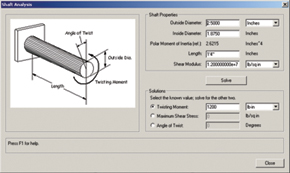VectorWorks 11
This mechanical design program combines a middle-of-the-road price with expandedand useful capabilities; along with some drawbacks.
Latest News
November 1, 2004
By Joe Greco
Most mechanical design programs today can be placed into one of two categories.Either they are expensive applications like SolidWorks, Wildfire, or CATIA, costingthousands upon thousands of dollars and offering very specific mechanically orientedtools, or they are programs that cost only a few hundred dollars, but don’t providemany of the tools that a mechanical engineer needs. VectorWorks Mechanical fromNemetschek, N.A. of Columbia, Maryland, is a mixture of the two—it has a streetprice of about $1,200, yet offers a fairly useful array of mechanical tools. However,it lacks some functions useful to mechanical engineers. Now that a new versionis out, we thought we’d take a look at its pluses and minuses.
Figure 1: VectorWorks Mechanical’s useful calculator for shaft analysis (left)and Version 11’s new Simple Beam Calculator (below).
In the Beginning
Because this is Desktop Engineering’s first in-depth review of VectorWorks inmany years, let’s recap a little of the program’s history as well as some of itskey features. Though many are not aware of it, VectorWorks has been around foralmost 20 years; it started out as MiniCAD for the Apple Macintosh in 1985. Inthe mid-1990s, it was renamed and began to run on the Windows operating system.
Because of its origins on the Mac, VectorWorks has always had a graphical userinterface—Mac users had long enjoyed the use of its icons while AutoCAD userswere still keying in commands on their PCs. However, because of its Macintoshorigins, today’s PC users will notice the lack of certain familiar Windows interfaceregulars, such as the Standard toolbar. Incidentally, even certain terminologyis different—VectorWorks still refers to toolbars as palettes.
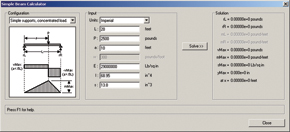 For several versions now, VectorWorks has had a fairly complete set of 2D and3D tools. A couple of its more powerful 2D mechanical-related tools are geometricand dimensional constraints, which allow users to perform parametric sketchingsimilar to programs like SolidWorks, albeit without some of the more advancedcapabilities. There is also a wealth of engineering calculators that can be usedfor figuring the size of steel beams, shafts, springs, and more (see Figure 1).The software also houses an internal database and spreadsheet for tracking nongraphicinformation.
For several versions now, VectorWorks has had a fairly complete set of 2D and3D tools. A couple of its more powerful 2D mechanical-related tools are geometricand dimensional constraints, which allow users to perform parametric sketchingsimilar to programs like SolidWorks, albeit without some of the more advancedcapabilities. There is also a wealth of engineering calculators that can be usedfor figuring the size of steel beams, shafts, springs, and more (see Figure 1).The software also houses an internal database and spreadsheet for tracking nongraphicinformation.
In 3D, it has fillets, chamfers, shelling, and Boolean operations. VectorWorksalso features fairly robust surfacing tools, including the ability to trim, fillet,and cap surfaces. In addition, tools sometimes thought of as 2D-only also workin 3D, including auto-alignment capabilities, splines, and parametric symbolssuch as bolts, bearings, springs, and so on.
 Figure 2: While the enhancements in VectorWorks Mechanical 11 are not revolutionary,existing users will find most of them handy, such as the Spring Calculator’s abilityto place both the drawing and model of the specified spring in the current file.This image also shows the program’s user interface.
Figure 2: While the enhancements in VectorWorks Mechanical 11 are not revolutionary,existing users will find most of them handy, such as the Spring Calculator’s abilityto place both the drawing and model of the specified spring in the current file.This image also shows the program’s user interface.
Expanded Capabilities
Speaking of parametric symbols, Version 11 has expanded these capabilities: Bothbearing lock nuts and Woodruff key components can be parametrically created in2D and 3D. VectorWorks now houses new calculators including a Belt Length Calculatorand a Chain Length Calculator, which can be used to find the total length of thebelt or chain, or its center distance. In addition, the Spring Calculator commandnow has the ability to actually draw the spring—something the two aforementionedcalculators should have (see Figure 2).
The program’s beam calculator has always been fairly impressive, but users hadto open a special template file to run it. Now Nemetschek has integrated a simplerversion of the calculator directly inside of VectorWorks. It works pretty well,but it doesn’t allow users to add both uniform and concentrated loads in the sameanalysis, like its big brother.
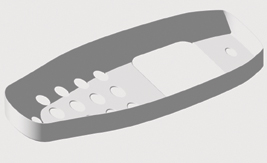
Figure 3: RenderWorks can produce decent quality rendering with shadows. Thismodel was created using 3D MCAD-like features such as extrude, fillet, and shell.However, VectorWorks didn’t accept certain fillet and shell values that shouldhave worked and editing the features it did build would either be difficult orimpossible.
Another tool that also uses its own template file was created to help the engineerscreate a cam-and-follower design. In Version 11, this has been improved by theadditional capability to animate the results. In addition, other improvementsto this tool allow users to define more complex cam designs.
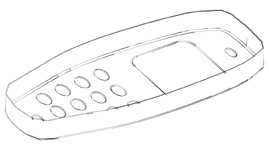 Figure 4: Artistic Rendering is now possible in RenderWorks. Here, the TaperedLines option was selected.
Figure 4: Artistic Rendering is now possible in RenderWorks. Here, the TaperedLines option was selected.
The Interface Situation
While VectorWorks doesn’t have the most modern interface, Nemetschek is constantlytweaking it and Version 11 incorporates changes that make certain modeling operationsmore interactive. An example is the new ability to change the angle of a taperedshape by dynamically dragging an editing handle.
Not all the interface changes, however, are good. In an ongoing effort to trimits toolbars so they are less cluttered and help present a simpler user interface,this version of VectorWorks has more of its tools buried in pop-out toolbars,which I feel actually makes the program more difficult to use. For example, popular2D editing tools such as Rotate, Mirror, Reshape, Offset, Trim, and Connect wereonce located in plain sight directly on the 2D toolbar. Now, however, they areburied inside of three different pop-outs. This not only means you have to stopand think in order to find the correct tool, but activating it requires more clicks.
Users do have the ability to customize VectorWorks’s user interface. Customizationis done via the Workspace Editor command, which is powerful but does not quiteuse the standard Windows techniques for editing the interface, another issue thatharkens back to the software originating on the Mac platform.
The software also features an optional, but integrated, program appropriatelycalled RenderWorks as well as the ability to perform artistic renderings (seeFigures 3 and 4). Based on technology from LightWork Design of England, the newstyles look nice, but in general the program’s performance is slow.
Do You Need VectorWorks?
If you are an AutoCAD user who only uses 2D and are fairly happy with the softwareand Autodesk, but you need more of a mechanically oriented program, then you probablyshould consider AutoCAD Mechanical, even though it costs a lot more than VectorWorksMechanical. However, if you need 3D capabilities or want to move away from theAutoCAD family, VectorWorks may be a good match for you, especially with its powerfulDWG import capabilities (see Figure 5).
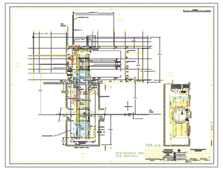 Figure 5: VectorWorks Mechanical 11 imports and exports files in DXF/DWG up toversion 2005, along with view ports and paperspace entities. I imported a fewDWG 2005 (and older) files and VectorWorks handled them very well, save a fewscaling problems with arrowheads. This can be avoided by using the program toconvert dimensions to groups, but then some editing capabilities are not available.
Figure 5: VectorWorks Mechanical 11 imports and exports files in DXF/DWG up toversion 2005, along with view ports and paperspace entities. I imported a fewDWG 2005 (and older) files and VectorWorks handled them very well, save a fewscaling problems with arrowheads. This can be avoided by using the program toconvert dimensions to groups, but then some editing capabilities are not available.
In addition, if you got started on one of the extremely low-cost 2D/3D CAD productslike TurboCAD or DesignCAD and now your needs exceed their toolsets, VectorWorkscould be for you. However, VectorWorks is no match for a mid-range MCAD applicationlike SolidWorks, as it lacks history-based parametric capabilities, mechanical-specifictools like sheet metal, weldments, and more, as well as the ability to handlelarge assemblies. On the other hand, many users may want to consider VectorWorksas a powerful adjunct—some may find its engineering tools alone worth the costof the software.
Joe Greco is a Desktop Engineering contributing editor. You can send Joe yourthoughts on this article via e-mail c/o [email protected].
Nemetschek, N.A.Columbia, MD
Subscribe to our FREE magazine, FREE email newsletters or both!
Latest News
About the Author
DE’s editors contribute news and new product announcements to Digital Engineering.
Press releases may be sent to them via [email protected].







